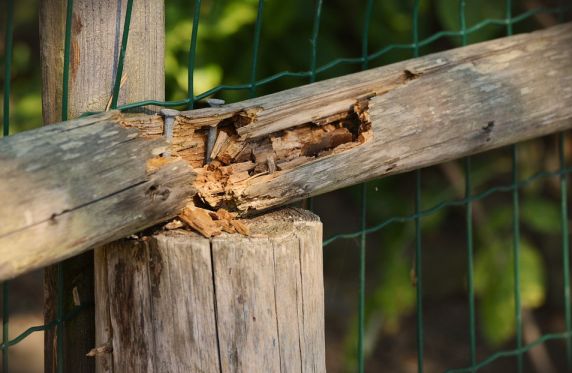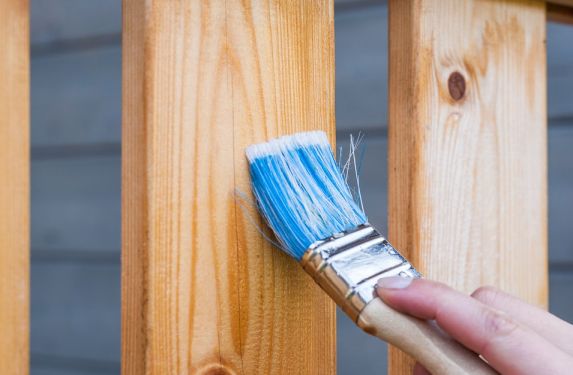
Maintenance tips for winter are simple to follow, and I expect you want your fencing and yard looking brilliant this winter. Aluminum and wood fences provide an exceptional approach to adding distinction and privacy to your home. Nevertheless, without proper understanding, maintenance, and preparation your preferred fence style becomes shabby in appearance. By applying a suitable maintenance approach, you can ensure your fence looks incredible through the winter season. Our tips would cover the following areas:
- Wood Fence Maintenance Winter Tips
- Aluminum Fence Maintenance Winter Tips
- Yard Maintenance: How to Prepare Your Yard for The Winter
Wood Fence Maintenance Winter Tips

Amongst the cold, rain, and wind temperatures, the effect of winter on the wood fence, if not properly checked, can be devastating. Spending time outside during winter may be the last thing on your mind, but the addition of a little more maintenance now can aid improve the lifespan of your fence and lessen any issues you will come across come spring. To correctly understand the Wood Fence Maintenance and Winter Tips, we are going to guide you through:
- What Winter Weather Conditions Does to Wood Fence
- Maintaining a Great Appearance for Your Wood Fence During Winter
- Best Winter Maintenance Tips for Wood Fences
- What Winter Weather Conditions Does to Wood Fence
Although heat and sunlight are in general the significant perpetrators when it comes to damages on a wood fence, winter time’s constant moisture and ever-changing temperatures can also be a source of difficulties. Below are the few ways the winter weather is affecting your wood fence:
Altering Temperatures:
Changes in temperature causes contraction and expansion in wood, which can result in knots and leave knotholes within your fence. If left unattended to, knotholes can serve as an invitation to rot and pests’ infestation on your wood fence.
Falling Debris:
Loose tree limbs can break down under the influence of ice and snow, instigating damages to a wood fence on their way down. To effectively handle this threat, you need to monitor and trim back any tree branches any within falling distance to your fence.
Rain and Snow:
Protracted exposure to moisture deteriorates the fibers present in a wood fence and paves the way for mildew, mold, and rot. The best defense against the rain for a wood fence is applying a water-resistant stain or sealant. It is also vital to keep organic matter, i.e., leaves, from becoming wedged among fence boards. They hinder any air flow and makes traps for moisture.
Shifting Soil:
Heavy rainfall can lead to water soaking the soil and creating landslides, shifts, and sinkholes that could impact the supporting posts of your fence. Fortunately, you always have to be on the lookout for your fence posts all through the winter to make sure they continue to be durable, straight, and rot-free.
Maintaining a Great Appearance for Your Wood Fence During Winter
Regularly clean the mildew and mold that pile up on your fence. Doing this helps covered areas limit the speed of rotting. Pressure washing is an effective and safe approach to eliminate all the built-up bacteria and dirt that discolors your wood fence. After cleaning your wood fence, consider putting on a coat of stain or a protective seal to reserve it.
You will also want to eliminate any vegetation that has overrun your wood fence. When overgrown vegetation are left unconstrained, they can instigate significant destruction. Overgrown plants are the source for excess moisture and thwart sunlight from going through to aid air the panels of the wood fence. Be kind enough to eliminate large, overgrown plants when conceivable.
Best Winter Maintenance Tips for Wood Fences
Putting on a quality wood fence stain in advance is your first line of defense against seasonal damage. Nevertheless, below are the best steps to take through the winter to make sure the health of your wood fence is in good shape:
- Examine your wood fence after significant storms
- Routine Cleaning
- Maintain clear cement footings from bark dust, dirt, and other material
- Replace Any Damaged Boards
- Examine Your Wood Fence After Major Storms

Inspect for damage and make sure the posts are still level by successively using a piece of string placed at the top to check lengthways. Check for any dips/rises in the section of string placed, and inspect posts to determine if any repairs are required. Performing all the needed structural repairs now will avert any damages from deteriorating during the winter.
Routine Cleaning
Cleaning of wood fence routinely from matters like leaves or other settled organic materials would help protect your fence during Winter Maintenance. This dirt’s could be found on rails or lodged stuck between boards.
Maintain clear cement footings from bark dust, dirt, and other material.
I know, this approach may appear counterintuitive, but performing such maintenance decreases any possibility of having cement become cracked by trapped moisture or temperature variation.
Replace Any Damaged Boards.
If possible, quickly replace any damaged boards. Replacing damaged boards on time would help maintain rigidity amongst the others.
